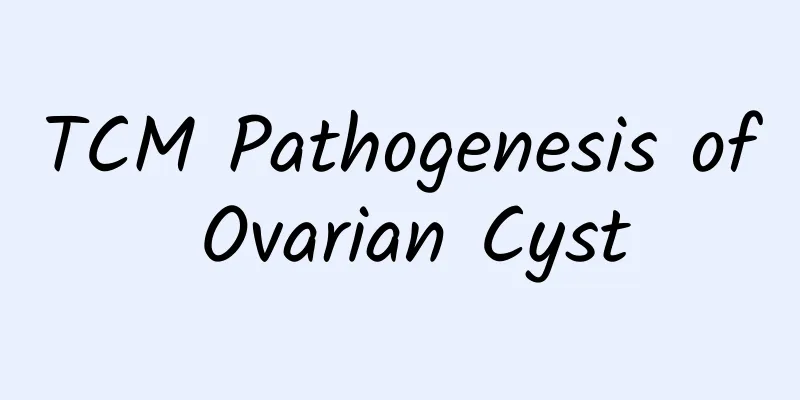TCM Pathogenesis of Ovarian Cyst

|
Ovarian cyst is a common gynecological disease. Traditional Chinese medicine classifies ovarian cyst as a "symptom and mass". Symptoms are hard masses that are fixed and cannot be dislodged by pushing and kneading. The pain is in a fixed place. This is a blood disease. Masses are full and invisible. They gather and disperse from time to time. They are pushed and kneaded and the pain is in no fixed place. This is a qi disease. Traditional Chinese medicine believes that the pathogenesis is mostly due to disharmony of the internal organs, obstruction of qi, and stagnation of blood. Qi gathering is a symptom, and blood stasis is a mass. Qi stagnation, blood stasis, phlegm dampness, and toxic heat are the most common. 1. Qi stagnation Qi stagnation is mostly caused by the patient's emotional discomfort, which leads to liver qi stagnation and obstruction of qi and blood circulation, which stagnate in the Chong, Ren and uterus, and eventually accumulate in the lower abdomen, becoming a qi stagnation syndrome. 2. Blood stasis On the one hand, Qi flows with blood, and stagnation of Qi causes blood stasis, which can lead to cyst formation over time. On the other hand, during menstruation and after childbirth, women's uterine vessels are empty, and the remaining blood has not been completely drained. If they have excessive sexual intercourse, or if external evils invade, Qi and blood will stagnate, or if they are angry and hurt the liver, Qi will reverse and blood will remain, or if they are worried and worried and worried, Qi deficiency and blood stasis will cause blood stasis to remain and accumulate inside the body, gradually accumulating into lumps. 3. Phlegm and dampness Obese women often have a phlegm-damp constitution, usually due to spleen deficiency, or improper diet, which damages the spleen and stomach, causing dysfunction of the spleen and stomach, and retention of dampness and turbidity inside the body, which gathers into phlegm. The phlegm and dampness flow down into the Chong and Ren meridians, blocking the cell networks, causing phlegm and blood to accumulate and gradually form masses. 4. Toxic heat During menstruation and after childbirth, the uterine vessels are empty and the remaining blood has not yet been drained out. The vulva is unclean, or sexual intercourse is uncontrolled, and infection with damp-heat toxins occurs. These enter the body and turn into heat, which combines with the blood, blocking the Chong and Ren meridians and forming blood stasis in the uterine vessels, resulting in a mass. |
<<: What are the treatments for patients with cervical erosion?
>>: What to do about amenorrhea
Recommend
What causes menopause in women?
The maintenance and management of the menstrual c...
Is it true that bacterial vaginosis can only be treated with sprays?
Is it true that bacterial vaginosis can only be t...
What are the reactions to miscarriage?
If a woman does not protect herself properly afte...
What not to eat after miscarriage
Women are not unfamiliar with the word "abor...
Is it better for women to have a medical abortion or a surgical abortion for their first pregnancy? Some common sense about abortion for women
Many people are familiar with the term "abor...
Women should have a certain understanding of the regulation of dysmenorrhea
Dysmenorrhea is a common phenomenon for some wome...
Several dangers of dysmenorrhea that female friends need to keep in mind
Clinically, the harm of dysmenorrhea is not just ...
Leptin helps with weight loss! Is the lazy sleeping method really useful?
Can you lose weight while sleeping? In recent yea...
How much does it cost to check for congenital absence of vagina?
How much does it cost to check for congenital abs...
Contraindications for bacterial vaginosis
There are many misunderstandings in the treatment...
What does dysfunctional uterine bleeding mean and what causes it?
Dysfunctional uterine bleeding is a type of abnor...
How to treat bacterial vaginosis effectively
How to treat bacterial vaginosis? The so-called b...
Is uterine fibroid 2.7*1.8cm serious?
Uterine fibroids are 2.7*1.8cm. If there are no o...
What will happen if I receive regular treatment for mild cervicitis at the end of two or three months?
What will happen if I receive regular treatment f...
Dietary taboos for uterine leiomyoma What can you eat for uterine leiomyoma
Uterine fibroids are the number one disease for w...









